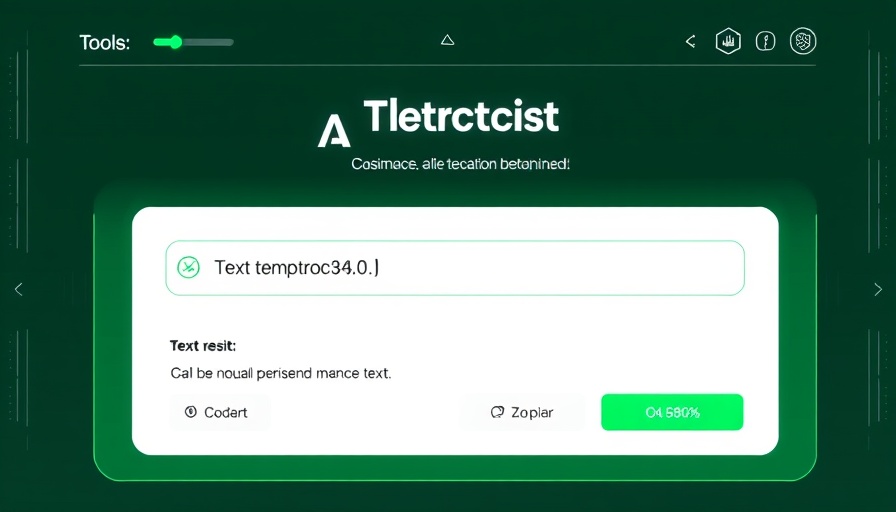
Understanding the Rise of AI and Its Implications
In a rapidly evolving digital landscape, artificial intelligence (AI) is transforming the way we create content. From automated emails to fully generated articles, AI writing tools like ChatGPT and Gemini are making it easier for individuals and organizations to produce written material quickly. However, with the convenience of these tools comes a significant challenge: distinguishing between human and AI-generated content. It's essential for students, professionals, and anyone who values originality to be aware of this distinction. This leads us to MyAIDetector.org, a tool specifically designed to help identify the authorship of written pieces.
What Is MyAIDetector.org?
This user-friendly online tool enables users to simply copy and paste text to ascertain whether the content was created by a human or an AI. It's grounded in advanced algorithms that analyze factors such as word choice, syntactic patterns, and linguistic nuances, ultimately categorizing the writing as “likely human-written” or “likely AI-generated.” This functionality is particularly crucial for educators, businesses, and content creators who seek to maintain a high standard of authenticity in written communications.
Why Use AI Detection Tools Like MyAIDetector.org?
The prevalence of AI writing tools prompts the need for reliable detection mechanisms. Many individuals may resort to using AI for quick solutions—sometimes even compromising the integrity of their original work. For instance, a teacher might use MyAIDetector.org to confirm academic honesty, while a blogger aims to ensure their writing is perceived as genuine. Companies, too, may want to verify that their marketing materials resonate with a human touch.
How MyAIDetector.org Distinguishes Human from AI Text
MyAIDetector.org employs a detailed scanning process that flags specific characteristics typical of AI-generated text. These may include repetitive phrases, overly formal language, a mechanical tone, and exaggerated grammatical precision. By implementing these checks, the tool offers insight into the likelihood of a text’s origin, providing users with a nuanced understanding of the material’s authenticity.
The Advantage of MyAIDetector.org
Compared to other available AI detection platforms, MyAIDetector.org shines for several reasons:
- Cost-free Access: Unlike many competitors, this tool can be used at no charge, making it accessible to anyone needing to verify text.
- Speed of Results: Users receive diagnosis in mere seconds, allowing for quick decisions on content authorship.
Future Implications of AI Detection Tools
As more individuals integrate AI writing tools into their workflows, the demand for reliable AI detection is likely to grow. It opens a conversation about the future of creativity: Will humans be able to maintain authenticity in a world dominated by AI? Moreover, as the definitions of authorship evolve, tools like MyAIDetector.org will play a crucial role in upholding standards of originality and trust in various sectors—education, journalism, corporate communication, and beyond.
Closing Thoughts: Why You Should Care
Understanding the dynamics of AI writing tools and detection methods is vital in a landscape increasingly impacted by technology. While AI can offer significant benefits—saving time and effort—it’s essential to ensure that your voice and creativity remain authentic. Use MyAIDetector.org to verify your work or the content you consume, fostering a future where technology enhances rather than replaces the human touch. To explore more about managing AI detection challenges, visit Prompt2Human to gain insights on how to engage meaningfully with AI tools.
 Add Row
Add Row  Add
Add 




Write A Comment